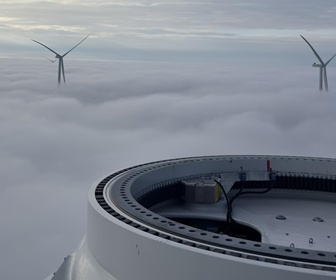U.S. Energy Secretary Steven Chu has announced that six projects have been selected to receive nearly US$ 7.5 million over two years to advance next-generation designs for wind turbine drivetrains.
These early research and development projects will focus on reducing the cost of wind energy by increasing component reliability or redesigning drivetrains to eliminate the need for some components altogether. Each project has been selected to receive up to US$ 700,000 to conduct technology cost and readiness assessments during Phase I. Following the six-month Phase I funding period, several of the projects will be selected for award negotiations of up to an additional US$ 2 million each over 18 months. Below is the list of the projects selected for awards:
These early research and development projects will focus on reducing the cost of wind energy by increasing component reliability or redesigning drivetrains to eliminate the need for some components altogether. Each project has been selected to receive up to US$ 700,000 to conduct technology cost and readiness assessments during Phase I. Following the six-month Phase I funding period, several of the projects will be selected for award negotiations of up to an additional US$ 2 million each over 18 months. Below is the list of the projects selected for awards:
- Advanced Magnet Lab (Palm Bay, Florida) will develop a superconducting direct-drive generator for large wind turbines.
- Boulder Wind Power (Boulder, Colorado) will test a permanent magnet-based direct-drive generator to validate performance and reliability of a large utility-scale turbine. Design requirements and optimization will also be documented for turbines up to 10MW and for turbines deployed in offshore applications.
- Clipper Windpower (Carpinteria, California) will develop and test a drivetrain design that enables increased serviceability over conventional gearboxes and is scalable to large capacity turbines.
- Dehlsen Associates, LLC (Santa Barbara, California) will design and test components of a direct-drive concept. The design may also be applicable to marine hydrokinetic - or ocean power - devices.
- GE Global Research (Niskayuna, New York) will design and perform component testing for a 10MW direct-drive generator employing low-temperature superconductivity technology.
- National Renewable Energy Laboratory (Golden, Colorado) will optimise and test a hybrid design that combines the advantages of geared and direct-drives through an improved single-stage gearbox and a non-permanent magnet generator that reduces the need for rare earth materials. The technology developed will be scalable to 10MW, and may be used to retrofit currently deployed 1.5MW turbines.










